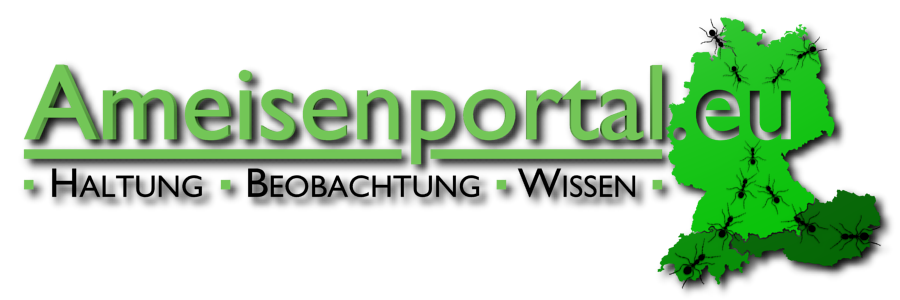Noch zum Thema "Brombeerblätter" und Bedeutung des Pflanzensaftes:
Pflanzensaft ist wichtige Nahrungsgrundlage für Blattschneiderameisen
Beim Schneiden und der Zerkleinerung frischer Blätter austretender Pflanzensaft ist die
wichtigste Nahrungsgrundlage für die Arbeiterinnen von Blattschneider-Ameisen. Nur ca.5 % ihres Energiebedarfs decken sie aus dem kultivierten Pilz, der seinerseits für die Ernährung der Larven unabdingbar ist. Die Tatsache ist lange bekannt und vielfach in der Fachliteratur erwähnt.
1972- 1979:P. M. Barrer and J. M. Cherrett (1972): Some factors affecting the site and pattern of leaf-cutting activity in the ant
Atta cephalotes L. – J.Entomology 47, 15-27.
M. Littledyke and J. M. Cherrett (1976): Direct ingestion of plant sap from cut leaves by the leaf-cutting ants
Atta cephalotes (L.) and
Acromyrmex octospinosus (Reich) (Formicidae, Attini). - Bulletin of Entomological Research 66, 205-217.
Abstract Ingestion of radiolabelled plant juices from cut surfaces of leaves during foraging and during substrate preparation for the fungus garden was demonstrated for laboratory colonies of the leaf-cutting ants Atta cephalotes (L.) and Acromyrmex octospinosus (Reich). Using P32 isotope, up to one-third of the radioactivity in the leaves was taken in directly by the colony as a whole, but this was much less when C14 was used. Additional plant material was taken in by the ants via the fungus garden. Large numbers of ants spend time in investigating cut surfaces of leaves and also in cutting and crimping leaves. Ingestion of plant material during these processes could play an important nutritional role in the colony and this may explain why many ants return from foraging apparently unladen. Large ants obtained most of their plant juice intake during foraging and the medium and small ants took much of theirs during substrate preparation. Inhibitory chemicals did not affect cutting but they reduced drinking and also reduced the intake of P32 from leaves during substrate preparation. The ants also ingested different amounts of P32 from leaves of different acceptability. It is suggested that leaf-cutting ants use fungus culture as a means of ‘sidestepping’ plant inhibitors. Nutrients are ingested directly from leaves when these are palatable, and the less palatable components are made available to the ants via the fungus.
R. J. QUINLAN* and J. M. CHERRETT (2008): The role of fungus in the diet of the leaf-cutting ant
Atta cephalotes (L.). -Ecological Entomology4, 151-160
Abstract. 1. The workers and queen of the leaf-cutting ant
Atta cephalotes fed on the juice of swollen hyphae (staphylae) produced by their cultivated fungus, but neither obtained sufficient energy from this source for their respiratory needs. The number of staphylae eaten by workers increased with worker size but was not enough to satisfy their energy requirements.
2. Larvae fed on whole staphylae and staphylae previously chewed by workers, and obtained sufficient energy from this source for respiration and growth. No evidence of feeding on fungus hyphae or of trophallaxis between worker and larvae was found. Larvae preferred staphylae to hyphae when fed them artificially and they gained more weight on the former.
3. Worker ants imbibed plant sap during the preparation of plant material for the fungus garden and the uptake of carbohydrate during this process was sufficient to supply their energy needs for approximately 24 h.
4. Staphylae were richer in lipid and carbohydrate, and poorer in protein than ant fungal hyphae.
5. The number of staphylae produced by the fungus gardens of two small nests was comparable with the observed consumption rate but would provide only about 4% of the nest's respiratory requirements.
6. In the light of these findings, a revised view of the role of the fungus in the diet of the ant is discussed.
1990: Zitiert in Hölldobler & Wilson 1990: The Ants. Beschrieben S. 598.
2003:
Wirth, R., Herz, H. Ryel, R. J., Beyschlag, W. & Hölldobler, B.(2003): Herbivory of Leaf-Cutting Ants. A Case Study on
Atta colombica in the Tropical Rainforest of Panama. – In: Baldwin, I.T., Caldwell, M.M., Heldmeyer, G., Lange, O.L., Mooney, H.A., Schulze, E.-D. & Sommer, U. (eds.): Ecological Studies, Vol. 164, 2003, XV+230 S.
http://www.antstore.net/shop/Literatur- ... -Ants.html € 175,- plus Versand (Bei einem anderen Versandhändler noch etwas teurer).
2012:Seit Oktober 2012 im AWiki:
http://www.ameisenwiki.de/index.php/Atta "Die Arbeiterinnen beziehen ihre Nahrung fast ausschließlich aus dem Pflanzensaft, der beim Schneiden und schließlich beim Zerkleinern vor dem Einbau in den Pilz frei wird. Nur 5 % ihres Energiebedarfs werden durch Aufnahme von Inhalt der Pilz-Gongylidien oder –Staphylae gedeckt. Die Larven dagegen ernähren sich ausschließlich von den Gongylidien des Pilzmyzels. (R. Wirth, H. Herz, R. J. Ryel, W. Beyschlag, B. Hölldobler 2003: Herbivory of Leaf-Cutting Ants. 240 Seiten, englisch). Darin werden Arbeiten anderer Autoren aus 1978 und 1979 zitiert."
---
Der obige Beitrag sollte in das „Wissens-Forum“ eingestellt werden.
Anlass sind der folgende Thread:
viewtopic.php?f=31&t=1068&start=100#p9883 ff.
sowie eine kurze Diskusson im AWiki:
http://www.ameisenwiki.de/index.php/Ben ... lenhydrate Wie dort bereits zum Ausdruck gebracht wurde, ist es nicht sinnvoll, anonym Anfragen zu stellen, die der Fragesteller selbst beantworten kann, z. B. direkt im Ameisenwiki. Unhöfliches “Nachbohren“ unter dem Deckmantel der Anonymität verspricht keinen Erfolg.
Dies als ein allgemeiner Hinweis auf den zwischenmenschlichen Umgang in Foren und Wikis.Ich selbst kenne die Fakten seit fast 40 Jahren (seit 1976!). Wenn ich in einem Beitrag im AP kurz darauf hinweise ohne gleich eine Begründung zu geben, ist dies für einen normalen Fragesteller noch lange kein Grund, mir zu unterstellen, dass es keine Literatur gebe.
Auch ich muss nach so langer Zeit wieder Arbeit investieren um die passenden Zitate herauszusuchen.
MfG,
A.Buschinger

 ).
).





